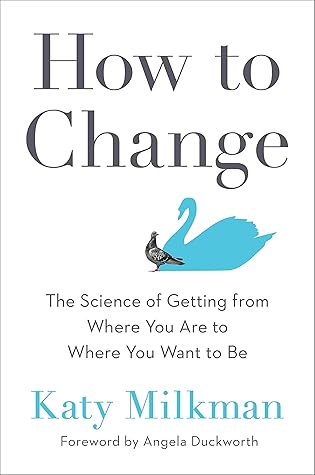More on this book
Community
Kindle Notes & Highlights
by
Katy Milkman
Read between
December 29 - December 29, 2023
You’ll learn that making hard things seem fun is a much better strategy than making hard things seem important.
But to give yourself the best chance at success, it’s critical to size up your opponent and develop a strategy tailored to overcome the particular challenges you face. The surest path to success is not one-size-fits-all. Instead, you must match your approach to your opponent.
Behavior change is similar. You can use an all-purpose strategy that works well on average. Set tough goals and break them down into component steps. Visualize success. Work to create habits—tiny ones, atomic ones, keystone ones—following the advice laid out in self-help bestsellers. But you’ll get further faster if you customize your strategy: isolate the weakness preventing progress, and then pounce.
an estimated 40 percent of premature deaths are the result of personal behaviors we can change. I’m
When policy makers, organizations, or scientists applied a one-size-fits-all strategy to change behavior, the results were mixed. But when they began by asking what stood in the way of progress—say, why their employees weren’t saving enough money or getting flu shots—and then developed targeted strategies to change behavior, the results were far better.
before I could offer a reply grounded in solid evidence, I would need to review the academic literature and gather some data of my own. I started itching to get back to my research team in Philadelphia.
She was hired on but didn’t know the answer. But took responsibility to figure it out. This takes honesty and courage
if you want to change your behavior or someone else’s, you’re at a huge advantage if you begin with a blank slate—a fresh start—and no old habits working against you.
She learned that rather than perceiving time as a continuum, we tend to think about our lives in “episodes,” creating story arcs from the notable incidents, or chapters, in our lives.
We’re more likely to pursue change on dates that feel like new beginnings because these moments help us overcome a common obstacle to goal initiation: the sense that we’ve failed before and will, thus, fail again.
These statistics suggest that when we’re seeking to change, the disruptions to our lives triggered by physical transitions can be just as powerful as the fresh starts spurred by new beginnings on our calendars.
These findings, combined with Hengchen’s, make it clear that while fresh starts are helpful for kick-starting change, they can also be unwelcome disruptors of well-functioning routines. Anyone seeking to maintain good habits should beware.
Economists call this tendency to favor instantly gratifying temptations over larger long-term rewards “present bias,” though its common name is “impulsivity,” and it’s unfortunately universal.
First, he recognized that undersaving has dire consequences—it limits access to health care, stunts educational achievement, and ultimately limits a person’s earnings potential.
Whenever you do something that reduces your own freedoms in the service of a greater goal, you’re using a commitment device.
Our expectations shape our outcomes.


